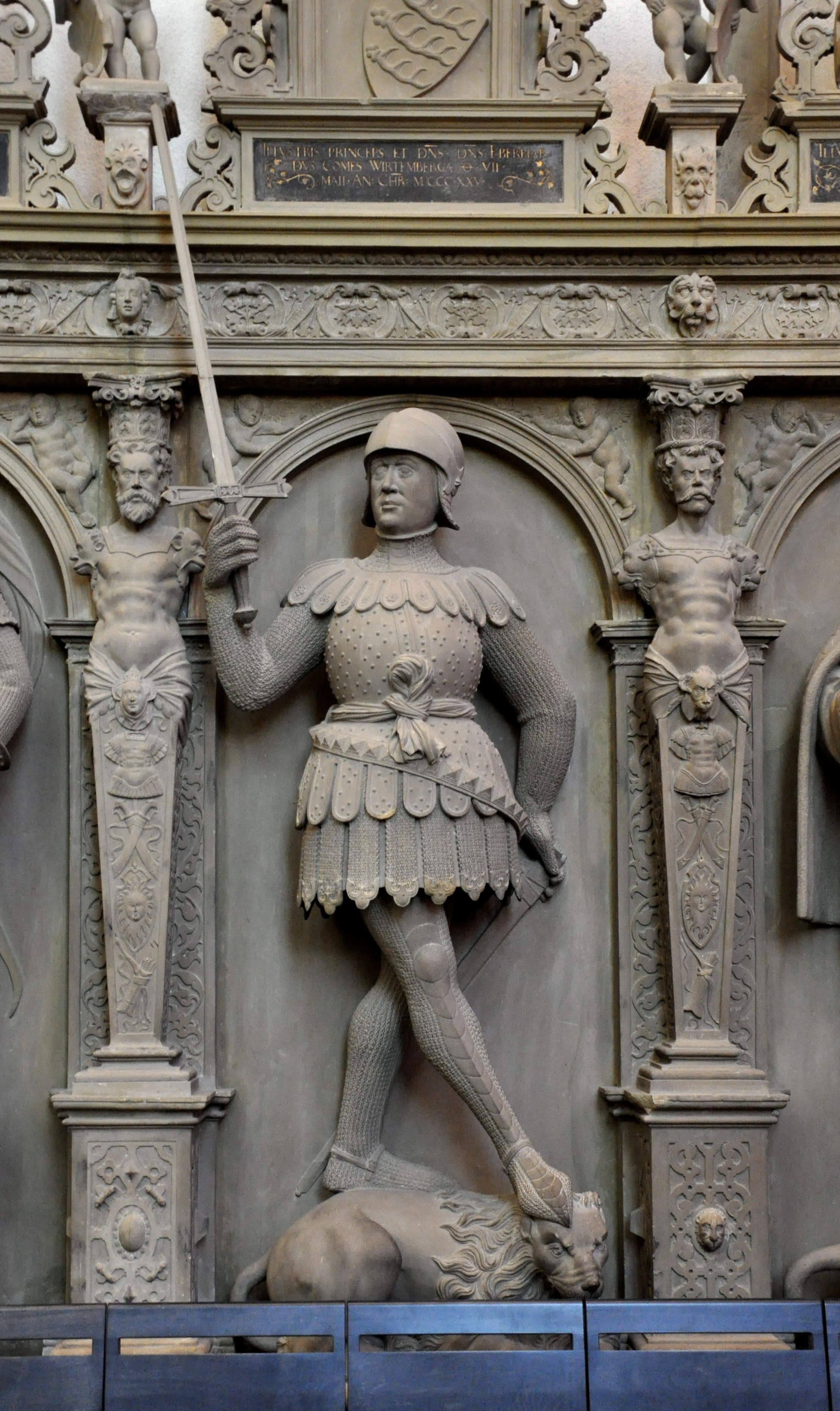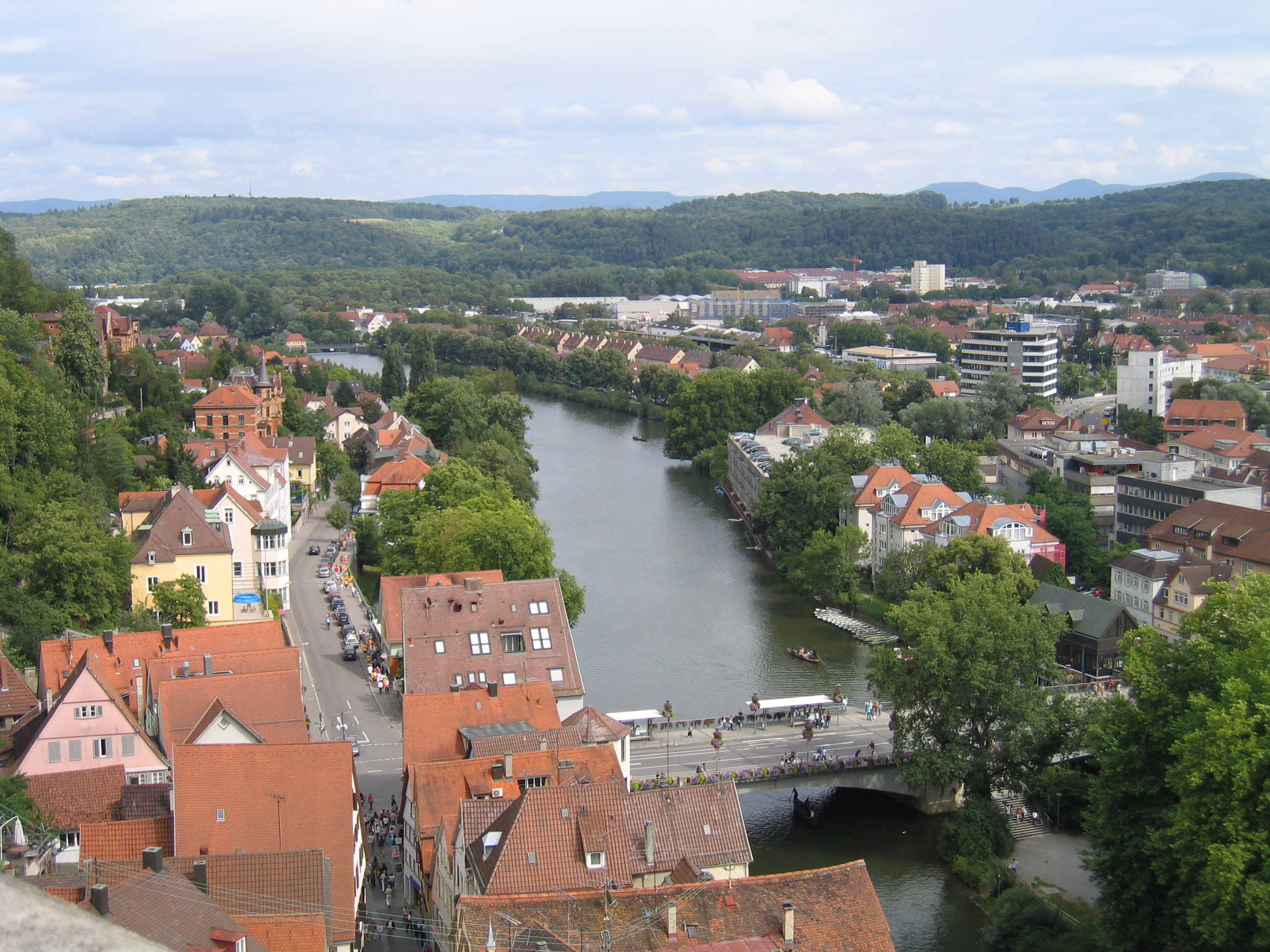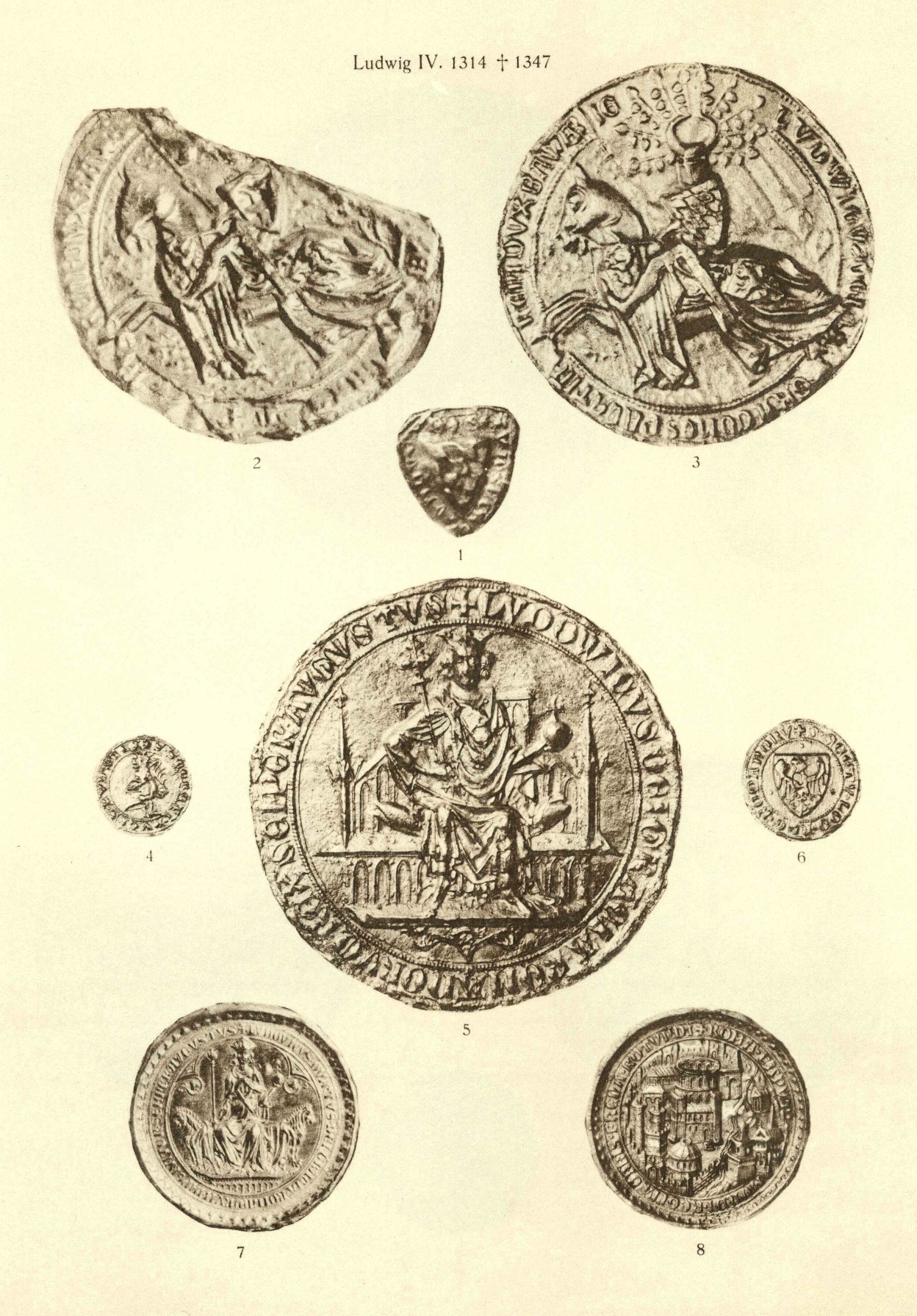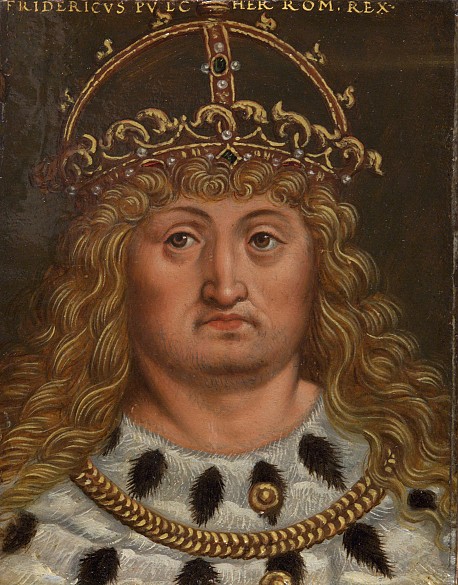|
Ulrich III, Count Of Württemberg
Ulrich III (1286/129111 July 1344) was County of Württemberg, Count of Württemberg from 1325 until his death in 1344. Life Ulrich was born between 1286 and 1291 to Count Eberhard I, Count of Württemberg, Eberhard I and an uncertain mother, either Margarethe of Lorraine (died before 1296) or Irmengard of Baden (died after 1320). He was already strongly involved in the administration of Württemberg during the reign of his father. For example, in 1319 he negotiated a treaty with King Frederick the Fair. He renewed this treaty after becoming count in 1325, when Württemberg had temporarily joined sides with Louis IV, Holy Roman Emperor, Louis IV. Both Louis and Frederick claimed power in the Holy Roman Empire at this time. After their reconciliation it was possible for Ulrich to be bound closely to the Holy Roman Empire, even after the death of Frederick I. This and his regional policy of pacts and acquisitions helped strongly to enlarge Württemberg's territory substantially. Be ... [...More Info...] [...Related Items...] OR: [Wikipedia] [Google] [Baidu] |
List Of Monarchs Of Württemberg
This is a list of monarchs of Württemberg, containing the Counts, Dukes, Electors, and Kings who reigned over different territories named Württemberg from the beginning of the County of Württemberg in the 11th century to the end of the Kingdom of Württemberg in 1918. Rulers of Württemberg House of Württemberg Partitions of Württemberg under Württemberg rule Table of monarchs Because of a lack of male heirs under Salic law, on the death of Wilhelm II in 1921 the royal house had to reach back to the descendants of Friedrich II Eugen (ruled 1795–97). The line of the Duke of Urach was excluded because of a Morganatic, morganatic marriage back in 1800 by its forebear Duke William Frederick Philip of Württemberg, Duke William, and so the succession devolved to the younger branch of Altshausen. Another morganatic descendant of Friedrich II Eugen was Mary of Teck (1867–1953), who married the British king George V of the United Kingdom, George V when he was Duke o ... [...More Info...] [...Related Items...] OR: [Wikipedia] [Google] [Baidu] |
Holy Roman Empire
The Holy Roman Empire, also known as the Holy Roman Empire of the German Nation after 1512, was a polity in Central and Western Europe, usually headed by the Holy Roman Emperor. It developed in the Early Middle Ages, and lasted for a millennium until its Dissolution of the Holy Roman Empire, dissolution in 1806 during the Napoleonic Wars. For most of its history the Empire comprised the entirety of the modern countries of Germany, Czechia, Austria, the Netherlands, Belgium, Switzerland, Slovenia, and Luxembourg, most of north-central Italy, and large parts of modern-day east France and west Poland. On 25 December 800, Pope Leo III crowned the Frankish king Charlemagne Roman emperor, reviving the title more than three centuries after the fall of the Western Roman Empire in 476. The title lapsed in 924, but was revived in 962 when Otto I, OttoI was crowned emperor by Pope John XII, as Charlemagne's and the Carolingian Empire's successor. From 962 until the 12th century, the empire ... [...More Info...] [...Related Items...] OR: [Wikipedia] [Google] [Baidu] |
1344 Deaths
Year 1344 (Roman numerals, MCCCXLIV) was a leap year starting on Thursday of the Julian calendar. Events January–December * March 26 – ''Reconquista'': The Siege of Algeciras (1342–44), one of the first European military engagements where gunpowder is used, ends with the Muslim city of Algeciras surrendering and being incorporated into the Kingdom of Castile. * April 17 – Constantine II, King of Armenia, is killed in an uprising and succeeded by a distant cousin, Constantine III, King of Armenia, Constantine III. * April 23 – The St. George's Night Uprising: The Livonian Order hangs Vesse, the rebel Estonians, Estonian Elder of Saaremaa Island. * May 13 – Battle of Pallene: A Christian fleet defeats a Turkish fleet at Pallene, Chalcidice. * October 24 – Smyrniote Crusade: A Christian fleet succeeds in taking the port city of Smyrna from the Aydinid Turks. * December 6 – Five-year-old Eric XII of Sweden, Erik Magnusson, the eldest ... [...More Info...] [...Related Items...] OR: [Wikipedia] [Google] [Baidu] |
13th-century Births
The 13th century was the century which lasted from January 1, 1201 (represented by the Roman numerals MCCI) through December 31, 1300 (MCCC) in accordance with the Julian calendar. The Mongol Empire was founded by Genghis Khan, which stretched from Eastern Asia to Eastern Europe. The conquests of Hulagu Khan and other Mongol invasions changed the course of the Muslim world, most notably the Siege of Baghdad (1258) and the destruction of the House of Wisdom. Other Muslim powers such as the Mali Empire and Delhi Sultanate conquered large parts of West Africa and the Indian subcontinent, while Buddhism witnessed a decline through the conquest led by Bakhtiyar Khilji. The earliest Islamic states in Southeast Asia formed during this century, most notably Samudera Pasai. The Kingdoms of Sukhothai and Hanthawaddy would emerge and go on to dominate their surrounding territories. Europe entered the apex of the High Middle Ages, characterized by rapid legal, cultural, and religious ... [...More Info...] [...Related Items...] OR: [Wikipedia] [Google] [Baidu] |
Rulers Of Württemberg
A ruler, sometimes called a rule, scale, line gauge, or metre/meter stick, is an instrument used to make length measurements, whereby a length is read from a series of markings called "rules" along an edge of the device. Usually, the instrument is rigid and the edge itself is a straightedge ("ruled straightedge"), which additionally allows one to draw straighter lines. Rulers are an important tool in geometry, geography and mathematics. They have been used since at least 2650 BC. Variants Rulers have long been made from different materials and in multiple sizes. Historically, they were mainly wood but plastics have also been used. They can be created with length markings instead of being scribed. Metal is also used for more durable rulers for use in the workshop; sometimes a metal edge is embedded into a wooden desk ruler to preserve the edge when used for straight-line cutting. Typically in length, though some can go up to 100 cm, it is useful for a ruler to be on a de ... [...More Info...] [...Related Items...] OR: [Wikipedia] [Google] [Baidu] |
LEO-BW
Landeskunde Entdecken Online (better known as LEO-BW) is a regional online information system for Baden-Württemberg, Germany. It is owned by the . Content Atlas In 2015, the Historical Atlas of Baden-Württemberg was incorporated into LEO-BW. German archives On February 22, 2018, the ''Südwestdeutsche Archivalienkunde'' (Southwest German Archival Records) was incorporated into LEO-BW, linking millions of documents into LEO-BW. The oldest of these documents come from the Middle Ages. Weimar Republic On November 8, 2017, the topic "From the Monarchy to the Republic" was released. It contained 900,000 documents of the Weimar Republic The Weimar Republic, officially known as the German Reich, was the German Reich, German state from 1918 to 1933, during which it was a constitutional republic for the first time in history; hence it is also referred to, and unofficially proclai .... History The plans for LEO-BW were first initiated in 2010 order to celebrate the 60th ... [...More Info...] [...Related Items...] OR: [Wikipedia] [Google] [Baidu] |
Tübingen
Tübingen (; ) is a traditional college town, university city in central Baden-Württemberg, Germany. It is situated south of the state capital, Stuttgart, and developed on both sides of the Neckar and Ammer (Neckar), Ammer rivers. about one in three of the 90,000 people living in Tübingen is a student. As of the 2018/2019 winter semester, 27,665 students attend the University of Tübingen, Eberhard Karl University of Tübingen. The city has the lowest median age in Germany, in part due to its status as a university city. As of December 31, 2015, the average age of a citizen of Tübingen is 39.1 years. Immediately north of the city lies the Schönbuch, a densely wooded nature park. The Swabian Alb mountains rise about (beeline Tübingen City to Roßberg - 869 m) to the southeast of Tübingen. The Ammer and Steinlach rivers are Tributary, tributaries of the Neckar river, which flows in an easterly direction through the city, just south of the Middle Ages, medieval old town. La ... [...More Info...] [...Related Items...] OR: [Wikipedia] [Google] [Baidu] |
Markgröningen
Markgröningen () is a town in the district (Kreis) of Ludwigsburg, Baden-Württemberg, Germany. It is known for its fine historic buildings, many in the '' Fachwerk'' German architectural style, and its annual Shepherds' Run. Markgröningen is on the ''Deutsche Fachwerkstraße'' ( German Timber-Frame Road). Geography Markgröningen is in the Strohgäu, on the River Glems, about 15 km northwest of Stuttgart and 10 km west of Ludwigsburg. Constituent communities In addition to Markgröningen itself, the town now includes the following formerly independent settlements: * Talhausen, a hamlet on the Glems abandoned in the 17th century and resettled around 1790 * Unterriexingen, a town at the confluence of the Glems and the Enz, incorporated into Markgröningen in 1973 * Hardthof and Schönbühlhof, founded as agricultural hamlets in the 18th century on the border with Schwieberdingen History Markgröningen (or simply “Gröningen,” as some older residents may c ... [...More Info...] [...Related Items...] OR: [Wikipedia] [Google] [Baidu] |
Louis IV, Holy Roman Emperor
Louis IV (; 1 April 1282 – 11 October 1347), called the Bavarian (, ), was King of the Romans from 1314, King of Italy from 1327, and Holy Roman Emperor from 1328 until his death in 1347. 20 October 1314 imperial election, Louis' election as king of Germany in 1314 was controversial, as his House of Habsburg, Habsburg cousin Frederick the Fair was simultaneously elected king by a separate set of electors. Louis defeated Frederick in the Battle of Mühldorf in 1322, and the two eventually reconciled. Louis was opposed and excommunicated by the French Pope John XXII; Louis in turn attempted to depose the pope and install an anti-pope. Louis IV was Duke of Upper Bavaria from 1294 to 1301 together with his elder brother Rudolf I, Duke of Bavaria, Rudolf I, was Margraviate of Brandenburg, Margrave of Brandenburg until 1323, and Electoral Palatinate, Count Palatine of the Rhine until 1329, and became Duke of Bavaria, Duke of Lower Bavaria in 1340. He was the last Bavarian to be a ... [...More Info...] [...Related Items...] OR: [Wikipedia] [Google] [Baidu] |
Eberhard I, Count Of Württemberg
Eberhard I (13 March 1265, in Stuttgart – 5 June 1325, in Stuttgart) was Count of Württemberg from 1279 until his death. He was nicknamed 'der Erlauchte' or the Illustrious Highness. Life Eberhard's half-brother and predecessor Ulrich II took office at the age of about eleven years. It is generally assumed that he stood under the guardianship and regency of Count Hartmann I of Grüningen. Ulrich II died in 1279 and his guardian Hartmann in 1280, allowing Eberhard to exercise unrestricted reign of the County of Württemberg from 1280. His father, Ulrich I, had extended the Württemberg territory and the anti-king Henry Raspe had legitimized his conquests. However, when Rudolph I was elected king, these territories had to be returned to the Empire. Rudolph created bailiwicks to administer the reclaimed imperial territories. He appointed his brother-in-law Albert II of Hohenberg-Rotenburg as vogt of the new bailiwick of Lower Swabia. Rudolph's aim was to re-establis ... [...More Info...] [...Related Items...] OR: [Wikipedia] [Google] [Baidu] |
Frederick The Fair
Frederick the Fair () or the Handsome ( – 13 January 1330), from the House of Habsburg, was the duke of Austria and Styria from 1308 as well as the anti-king of Germany from 1314 until 1325 and then co-king until his death. Background Frederick was born in Vienna, the second son of King Albert I of Germany by his wife Elisabeth of Gorizia-Tyrol, a scion of the Meinhardiner dynasty, and thereby a grandson of the first Habsburg king of Germany Rudolph I. Duke of Austria Still a minor, he and his elder brother Rudolph III had been vested with the duchies of Austria and Styria by their father in 1298. Upon Rudolph's early death in 1307 and the assassination of his father in 1308, he became the ruler of the Austrian and Styrian duchies on behalf of himself and his younger brothers. The royal title held by his father and grandfather however passed to Count Henry VII of Luxembourg, who was elected by six of seven votes, contrived by the mighty Archchancellor Peter of Aspelt, e ... [...More Info...] [...Related Items...] OR: [Wikipedia] [Google] [Baidu] |
County Of Württemberg
The County of Württemberg was a historical territory with origins in the realm of the House of Württemberg, the heart of the old Duchy of Swabia. Its capital was Stuttgart. From the 12th century until 1495, it was a county within the Holy Roman Empire. It later became a duchy and, after the breakup of the Holy Roman Empire, a kingdom. Etymology This county was named after a hill of the same name in the district of Untertürkheim in Rotenberg, Stuttgart, on which Wattenberg Castle stood until 1819. Until about 1350, the county appeared in records only with the spelling "Wirtenberg". History The House of Württemberg first appeared in the late 11th century. The first family member mentioned in records was Konrad I, in 1081, who is believed to have built the castle. The Württembergs became counts in the 12th century. In 1250, the House of Hohenstaufen's reign over the Duchy of Swabia ended; this allowed the Württembergs to expand their territory to include the duchy. Stutt ... [...More Info...] [...Related Items...] OR: [Wikipedia] [Google] [Baidu] |







